Faux Flower Meaning — 7 Positive Symbolisms of Artificial Flowers & What They Say About U
Faux flower meaning starts with intention. U choose form that lasts when real petals fade. U keep shape, color, and message consistent in every setting — that is quiet power and design maturity.
Faux flower meaning points to lasting beauty, emotional stability, and thoughtful care. It signals that U value presence over perfection, and consistency over chaos. In modern décor, that message translates into trust, reliability, and visual peace — exactly what B2B environments demand.
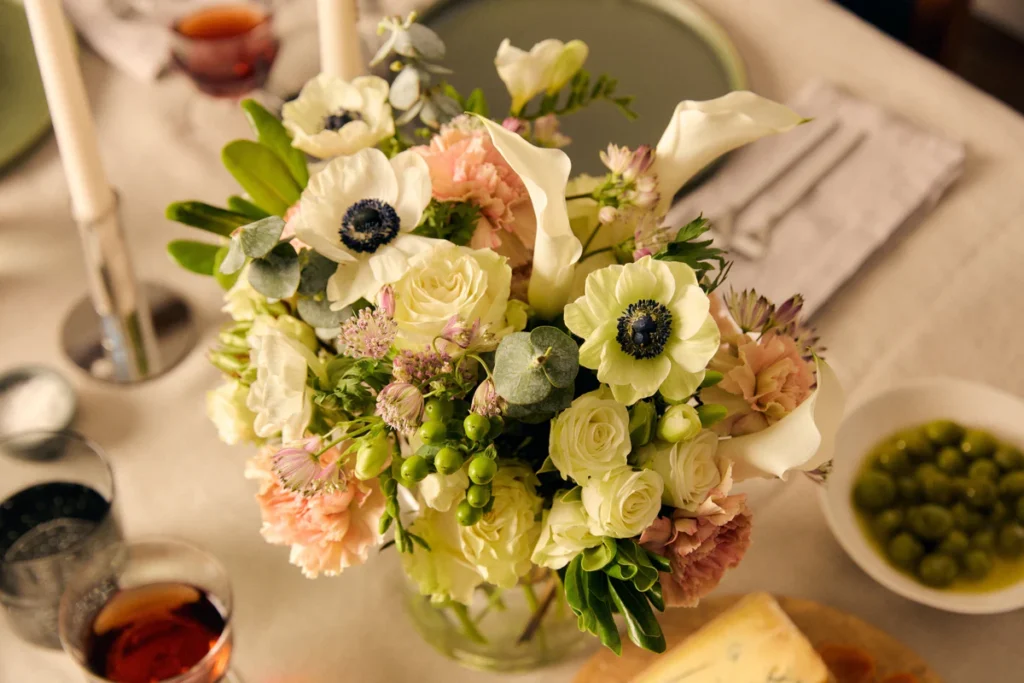
Artificial flowers do more than decorate—they communicate purpose. They reveal culture, discipline, and emotion. When clients walk into a room, your floral choices shape what they feel before U speak. Let’s decode what faux flower symbolism really says about U—and how it can strengthen your brand identity, interior mood, and client trust.
1. Historical Origins of Artificial Flowers — The First Layer of Faux Flower Meaning
Before industry, artificial flowers were handmade art. They came from patience, skill, and sacred symbolism. In China, Egypt, and Rome, they were crafted for temples, kings, and gods. Silk petals represented immortality; wax roses symbolized devotion; gold blossoms stood for eternal prosperity.
Historically, faux flower meaning reflected purity, wealth, and loyalty. They were icons of power and affection—objects designed to outlast emotion itself.
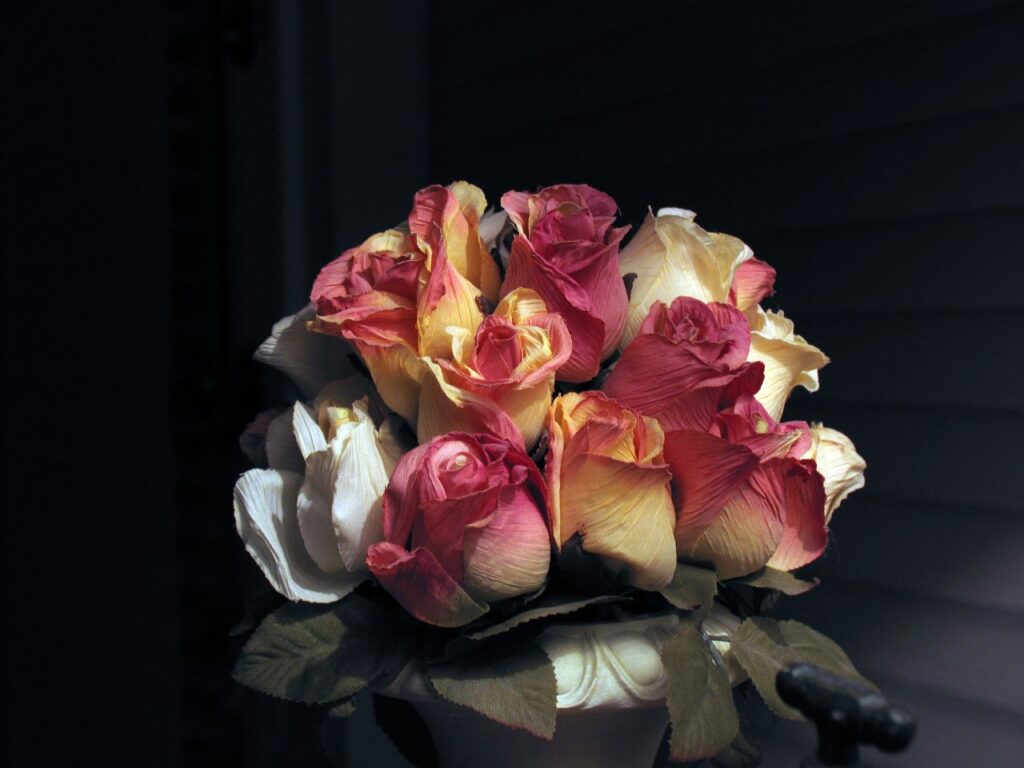
By the Renaissance, France turned faux florals into luxury art. Noble families collected silk roses like jewels. Merchants shipped them across Europe as symbols of sophistication and care.
One of my favorite examples: a French client asked us to reproduce 17th-century silk peonies for a hotel in Versailles. She said, “Our guests must feel eternal beauty.” That emotion—unchanging elegance—is the oldest faux flower meaning there is.
How Faux Flower Meaning Shaped Trade
These early exports set the foundation for the global décor industry. Silk blooms could travel where real stems could not. They survived distance, temperature, and time—much like how global brands today demand repeatable beauty across continents.
In B2B projects, that same logic applies. Whether U decorate a Dubai lobby or a London showroom, artificial florals ensure identical presentation. Consistency becomes culture—and beauty becomes scalable.
2. Modern Symbolism Behind Faux Florals — Stability in a Changing World
Today, faux flower meaning has evolved. It no longer imitates nature—it defines intention. U use faux florals to express balance, structure, and mindfulness. They represent sustainability, quiet luxury, and confidence in form.
Modern faux flower symbolism connects deeply with today’s values: eco-awareness, efficiency, and emotional control. It says, “We build beauty that lasts.”
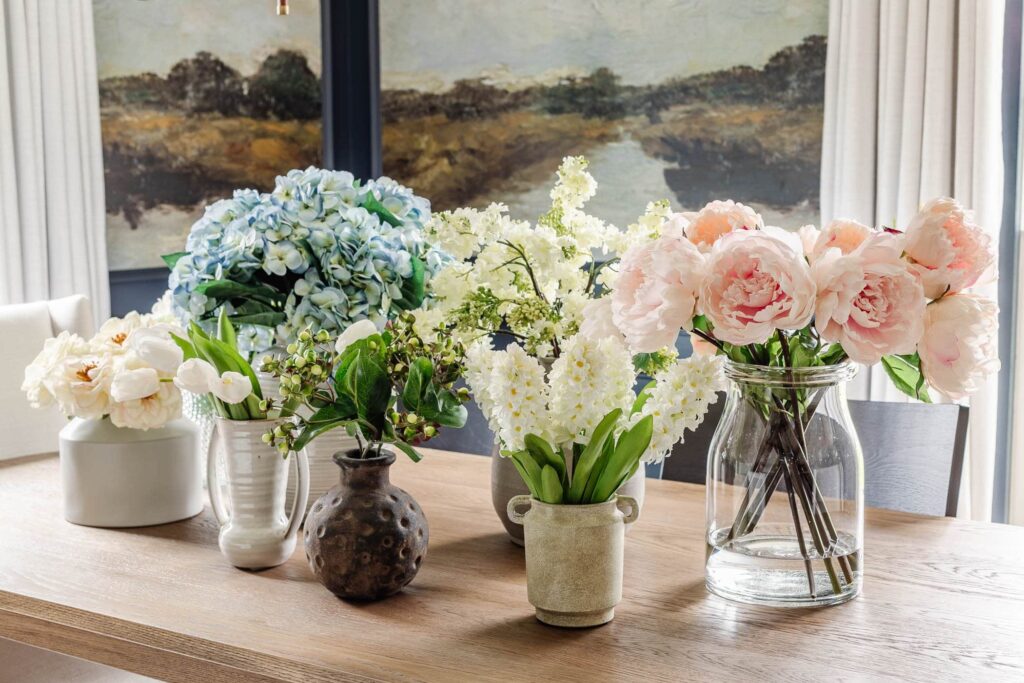
My client in Sydney manages 12 corporate spaces. She told me, “Real flowers wilt before the meeting starts. Faux keeps our rooms camera-ready 24/7.” That’s symbolism in action—control, calm, and professionalism.
Want long-term harmony between indoor and outdoor design? See our UV-resistant outdoor plant guide for natural continuity across spaces.
Why Modern Faux Flower Meaning Resonates in Business
- Predictability: Consistency builds brand trust.
- Longevity: Durable displays reduce waste and cost.
- Emotional neutrality: Calm color palettes enhance focus.
I once collaborated with a global coworking network. We standardized their reception florals—same palette, same height, same tone. The result? Identical brand experience across 32 cities. That is the new meaning of “real consistency.”
3. Cultural and Global Interpretations — Faux Flower Meaning Around the World
Every culture translates faux flower meaning differently, but the heart is the same—beauty that endures. In Japan, preserved florals reflect mindfulness and spatial harmony. In Western design, they symbolize elegance and remembrance. In Middle Eastern décor, they express prosperity and hospitality.
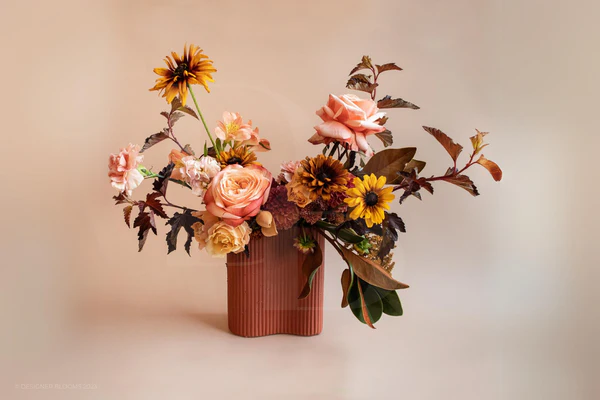
One U.K. retailer shared that faux wreaths for memorial spaces now outsell real ones 2:1. Clients said they feel more “faithful.” In Australia, I’ve seen resorts use faux tropical greens to resist salt air—resilience as design language.
External inspiration: explore Architectural Digest for insights on how décor reflects identity.
Localization Tips for Global Buyers
I always recommend adapting color psychology to geography:
- Japan → soft whites and blush tones for serenity.
- Dubai → gold accents and deep reds for prosperity.
- Germany → clean neutrals for minimal luxury.
- Australia → bright greens and corals for energy.
Meaning must feel authentic to context. The right symbolism can make a display not just attractive—but emotionally local.
4. Faux vs. Real — Emotional Contrast & Business Logic
Both real and artificial flowers express emotion, but in different timelines. Real flowers celebrate the moment; faux flowers protect it. One fades; the other endures.
Faux flower meaning reflects patience, maturity, and reliability. Real florals mirror passion, spontaneity, and natural charm.
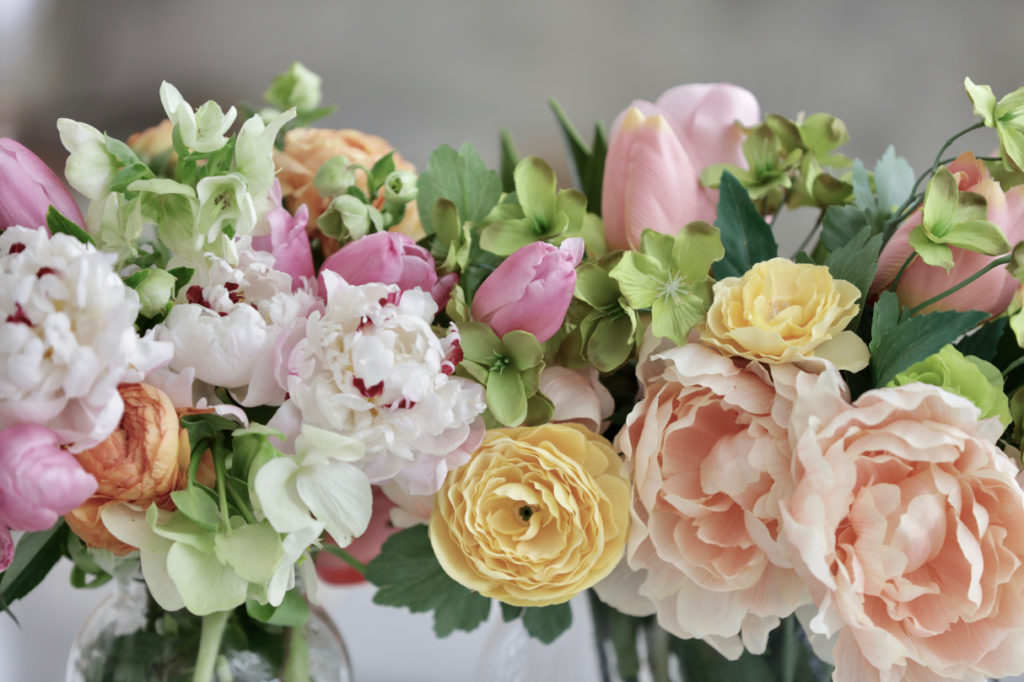
For business, predictability often wins. I remember a planner in California who said: “Our real roses collapsed before guests arrived. The faux version from Botanic Blossoms looked identical in every photo.” That’s the power of permanence—it keeps your brand’s emotional tone stable.
To secure that same dependability, explore our wholesale wedding flowers collection—crafted for logistics, travel, and stage lighting.
Smart Blending Strategy
Mix both worlds: use real herbs for scent and faux petals for form. It’s sensory perfection—emotion plus endurance. Guests notice the harmony, not the difference.
5. Gift Meaning by Color & Arrangement — The Language of Faux Florals
Color speaks louder than text. Every shade has intention. In corporate gifting and event décor, faux flower meaning follows timeless color logic:
- White → purity and honesty.
- Red → confidence and passion.
- Pink → gratitude and care.
- Green → renewal and harmony.
- Gold → success and celebration.
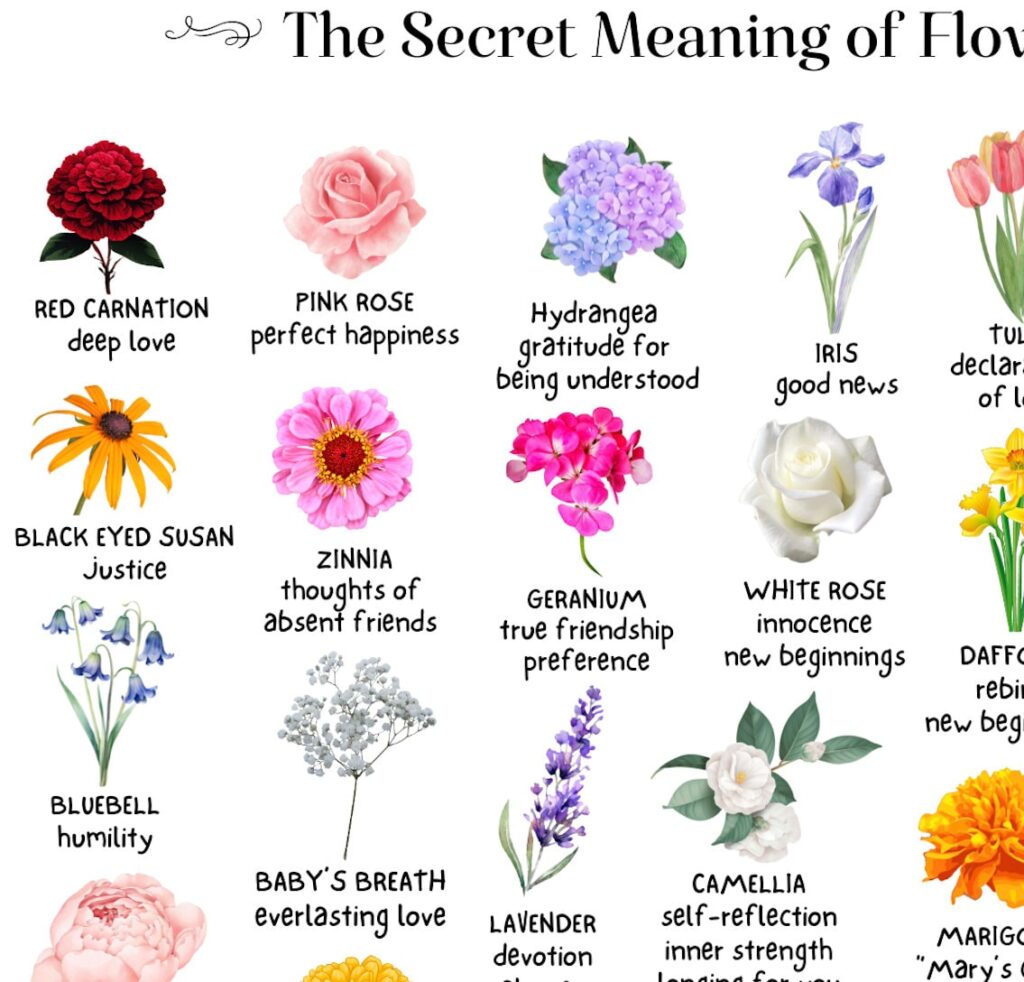
Real client patterns I see every season:
- U.S. planners pick ivory + blush for soft love.
- European stylists choose tropical hues for confidence.
- Asian buyers prefer balanced greens for longevity.
These colors build emotional equity. Faux flowers extend that message beyond the season—they keep memory alive without maintenance. Learn upkeep tricks from our cleaning artificial flowers guide.
Palette Systems for Teams
In B2B practice, I teach my clients a “palette SOP.” Three main lanes: Calm Neutrals (ivory, sand, sage), Classic Romance (rose, blush, wine), Vivid Energy (citrus, coral, lime). This simplifies purchasing and display decisions. Your staff can follow a color card instead of guessing trends. It saves time and keeps your brand emotionally consistent.
6. Personal Insight — Why I Believe Faux Flower Meaning Matters
After 10+ years in this craft, I see faux flower meaning not as imitation, but as evolution. It’s the art of creating permanence in an impermanent world. Each arrangement tells a story of care—proof that consistency is also emotion.
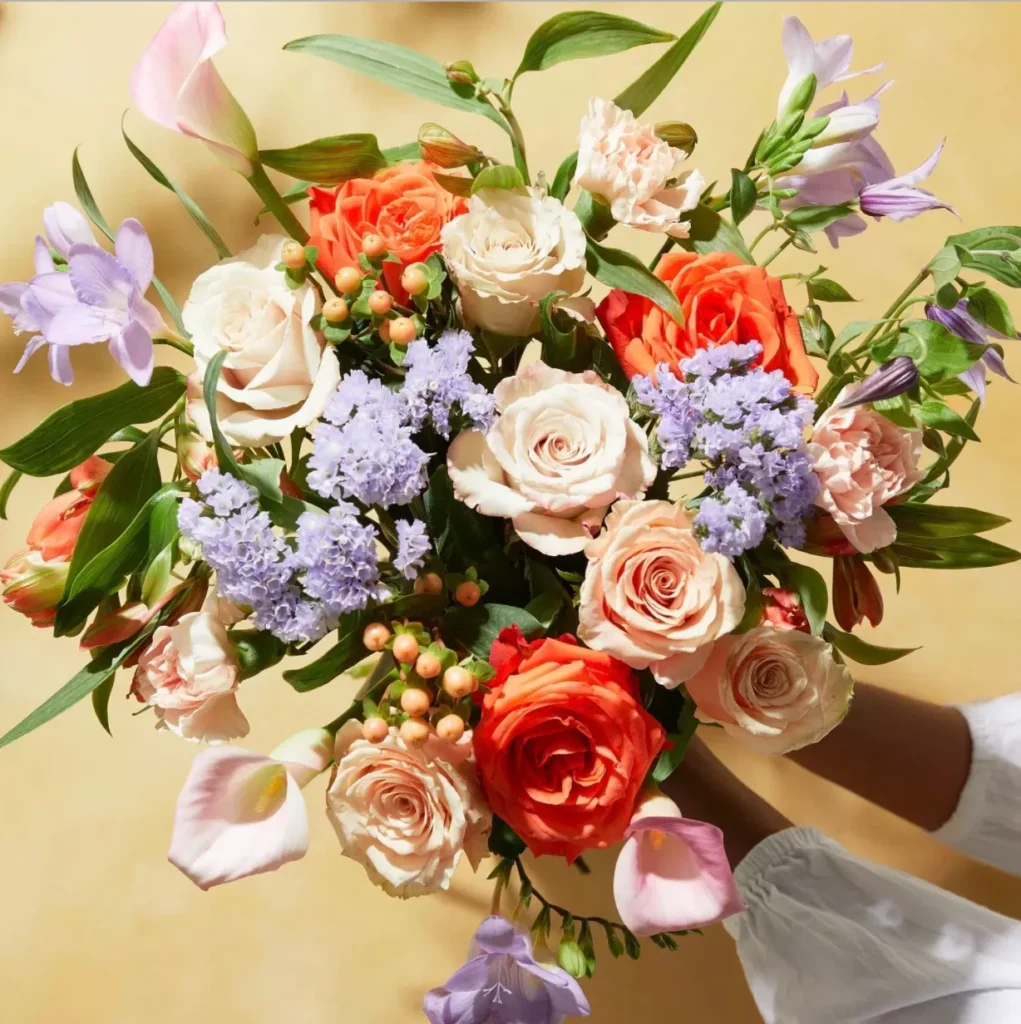
One Canadian client once sent me a note with a picture of our peony bouquet beside her grandmother’s portrait. She wrote, “These flowers don’t die—they remind me to keep caring.” That photo now hangs in our studio. It reminds my team why this work matters.
Turning Meaning into a System
In our factory, we treat design as process. Every stem follows a rule: palette match, height ratio, light test, emotional intent. We teach clients to standardize beauty, just like production. This transforms meaning into measurable quality—a scalable version of elegance.
7. The Future of Faux Flower Meaning — Beyond Decoration
By 2025, faux flower meaning is merging with technology. Smart lighting, sustainable resin, and recycled fabrics make modern faux florals more ethical and intelligent. Imagine a planter that tracks humidity or adjusts lighting color to mood—that’s where innovation blooms next.
We’re now exploring materials that mimic natural touch yet stay 100% recyclable. The goal is not just realism—it’s conscience. Faux florals are moving from décor to dialogue: they tell stories about how businesses care for planet and people.
For example, one of our eco-hotel clients in Bali replaced weekly real flower imports with silk-touch stems. The result: reduced waste by 86%, consistent brand visuals, and a sustainability award. That’s meaningful beauty—measurable and moral.
8. Implementation Playbook — From Faux Flower Meaning to Multi-Site SOP
Symbolism only scales when U turn it into process. I guide buyers through a simple four-step playbook so faux flower meaning becomes a repeatable experience across stores, hotels, and venues.
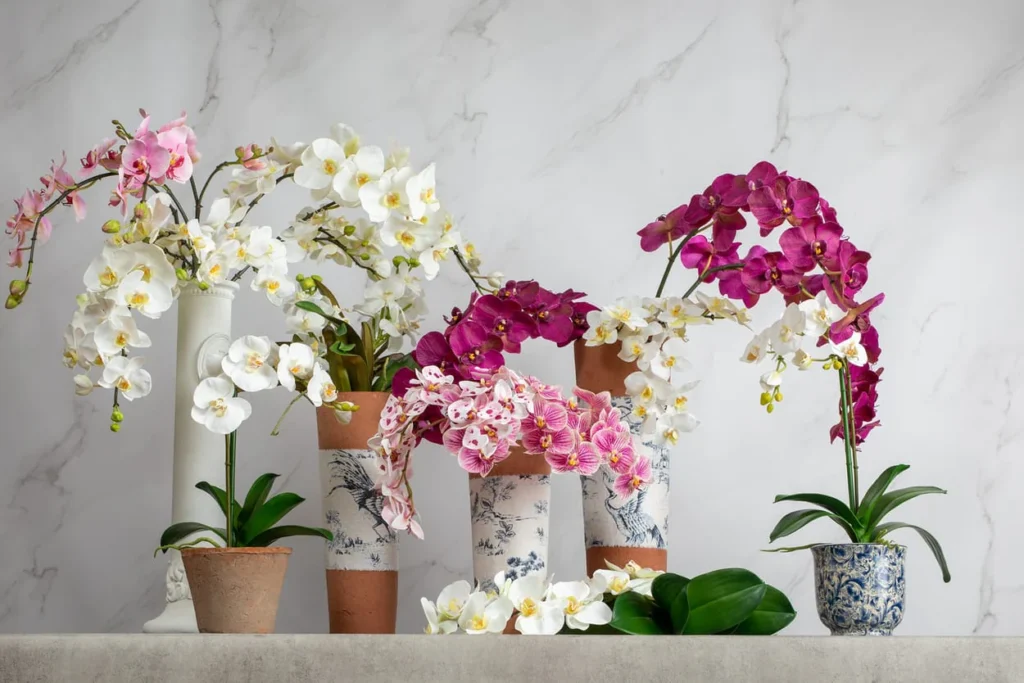
M.U.S.E. Framework
- Map: Audit spaces, light, footfall, and brand touchpoints. Identify where emotion matters most (entry, reception, point of sale, lounge).
- Use: Assign a function to each vignette: welcome, calm, celebrate, guide. Function leads color and height rules.
- Standardize: Lock three palette lanes, two height tiers, and one hero stem per lane. Document part numbers and replenishment cadence.
- Elevate: Add one symbolic accent per season (ribbon, stem, vase texture) to keep meaning fresh without re-training teams.
Team Tools That Work
Give staff a one-page build card with photos, counts, and a 10-minute timer target. Add a QR to a 60-second video. Provide a “swap list” for out-of-stock colors that preserves theme. This reduces errors and protects the message.
For outdoor areas, align your M.U.S.E. choices with our UV guide. For material resilience indoors, reference the materials guide. This keeps visuals, logistics, and durability in one narrative.
9. Procurement, Packaging & Logistics — KPIs That Preserve Meaning
Meaning fails if cartons fail. I help buyers set simple KPIs that protect faux flower meaning from factory to floor.
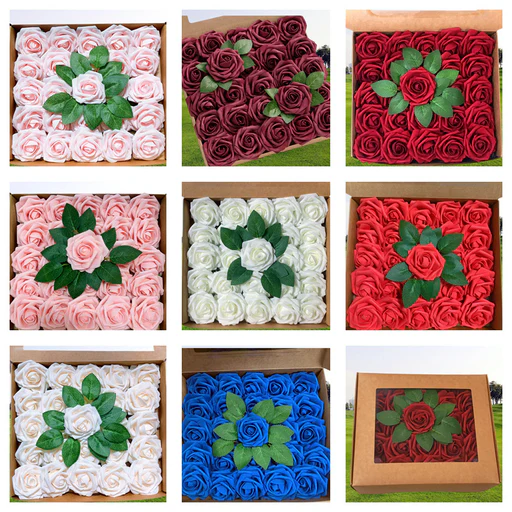
Five Numbers to Watch
- Breakage Rate (<1.5%) — stems arrive straight, heads intact, no dye rub.
- Build Time (<10 min) — staff can assemble a standard vignette without tools.
- Photo Consistency (>95%) — weekly photo checks match the master card.
- Replenishment SLA (7–12 days) — regional stock keeps peak weeks stable.
- Return Rate (<1%) — packaging and color accuracy prevent refunds.
Carton Design Tips
- Use molded supports or cross-layer kraft to stop head crush.
- Bundle by vignette, not by SKU. Stores open one box per scene.
- Print a mini build card inside the lid with QR to video.
If U serve weddings or events with tight windows, pre-wire hero stems and pre-label tiers. That cuts onsite friction. Direct clients to our wholesale wedding flowers kits designed for travel and fast staging.
10. Visual Merchandising & Content — Protecting Meaning in Photos, Reels, and Reviews
Clients meet your brand first through images. Keep faux flower meaning intact across channels with a simple content SOP.
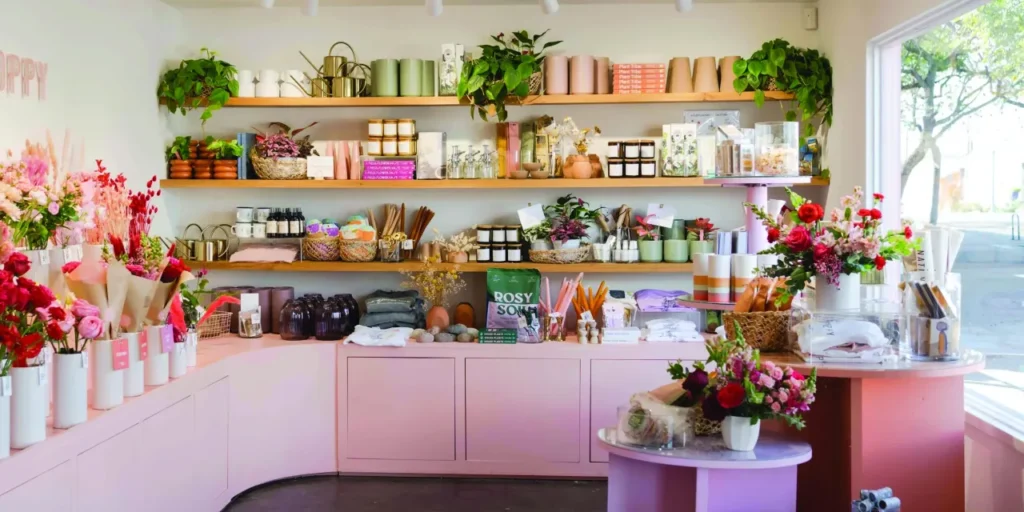
Photo Rules
- Angle: 15–30° above eye level for depth and stem structure.
- Light: Soft side light; avoid mixed color temps.
- Backdrop: Neutral matte; one accent prop tied to palette lane.
Copy Rules
- Open with the feeling: calm, welcome, celebrate.
- Name the palette lane and hero stem.
- Add one care tip and one use case.
Close every product page with two internal links: materials (realism) and cleaning (longevity). Example: “Crafted with silk-touch PE/PU for true-to-life texture — see our materials guide. Easy upkeep — follow our cleaning guide.” This reinforces meaning with proof.
Common Mistakes to Avoid
- Too many SKUs per scene. Emotion blurs. Keep it to one hero, two supports, one green.
- Glossy planters near strong light. Reflections cheapen texture. Use satin or matte.
- Unplanned height. Always set a focal height (eye to chin) for portraits and entrances.
When U keep visuals simple and language precise, guests feel the same message online and onsite. That alignment is what turns design into trust.
Conclusion — Why Faux Flower Meaning Endures
Faux flower meaning is steady beauty with purpose. It reflects how brands, homes, and hearts choose discipline over decay. It tells every guest and client the same quiet message: “Your experience matters—and it will stay beautiful.”
🌿 Ready to Create Something That Lasts?
Let’s design meaningful, maintenance-free floral décor that strengthens your brand and delights your clients worldwide.
B2B FAQ — Faux Flower Meaning
- Do faux flowers carry real emotional weight? Yes. Faux flower meaning represents steady affection, loyalty, and timeless design.
- Why do hotels and offices choose faux? Predictable visuals, eco-efficiency, and consistency across locations.
- How many colors should a brand standardize? Three palettes—neutral, romantic, energetic—fit 90% of spaces.
- Which materials feel most realistic? Silk-touch PE/PU with wired stems. See our materials guide.
- Can faux be used outdoors? Yes, UV-protected options exist. Read our UV outdoor guide.
- What’s a smart gift formula? One hero bloom + two support textures + one symbolic accent by color.
- How to clean long-term displays? Use microfiber and gentle soap. Follow our cleaning guide.
- Can real and faux mix? Yes—blend scent and structure for emotional authenticity.
- Do you offer private-label packaging? Absolutely. We customize boxes, ribbons, and inserts for wholesalers.
- How do I request pricing or samples? Use the CTA above or email jasmine@cnhycrafts.com.
